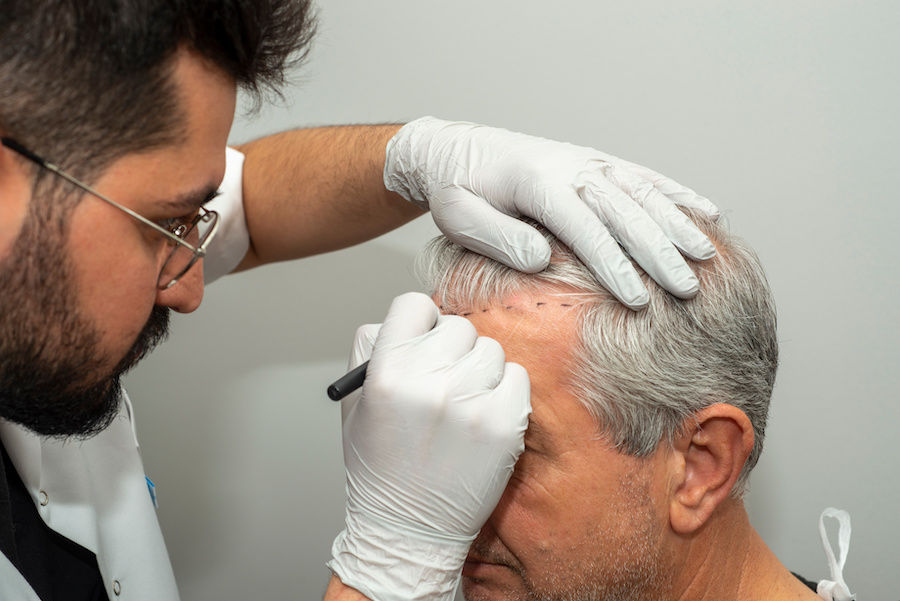What Areas Can Hair Transplant Fix?
- danyalmalikdynamic
- Jan 9
- 4 min read
Hair transplants have become one of the most effective and sought-after solutions for individuals experiencing hair loss. This medical procedure can restore hair in various regions of the scalp, as well as other parts of the body. If you’re considering a hair transplant, it’s important to understand the areas where this treatment is most effective and the long-term benefits it offers, especially when opting for a Hair Transplant in Dubai.
Understanding Hair Transplantation
Hair transplant is a surgical procedure where hair follicles are relocated from one part of the body (usually the back or sides of the scalp) to areas that are thinning or bald. The procedure aims to restore natural-looking hair in these areas, leading to a fuller, more youthful appearance. It is typically used to address male pattern baldness, female hair thinning, and other forms of hair loss.
Common Areas Hair Transplants Can Fix
Scalp (Crown and Hairline)
The most common area for hair transplants is the scalp. Whether it’s for receding hairlines or thinning at the crown, hair transplant treatments can create a denser, natural-looking hairline. The procedure can restore the hairline’s shape and prevent further recession.
In the crown area, where hair thinning is also common, hair transplants can be used to fill in bald patches and restore volume. The transplanted hair mimics natural growth, blending seamlessly with the surrounding hair for a uniform look.

Temples and Forehead
Hair thinning around the temples and forehead is a common issue for both men and women. Many people seek a hair transplant to restore these areas, especially as the hairline recedes with age. A transplant in this area can help maintain a youthful look and prevent the feeling of an overly "mature" appearance.
Thinning Areas on the Top of the Head
For individuals experiencing general thinning on the top of their head (often due to male or female pattern baldness), hair transplants can help restore volume and thickness. This region typically requires multiple grafts to ensure that the hair looks naturally dense, blending well with the existing hair.
Eyebrows
Hair transplants aren't limited to the scalp. People who have thin or sparse eyebrows due to genetics, over-plucking, or medical conditions can benefit from eyebrow hair transplants. The procedure involves transplanting hair follicles from the scalp to the eyebrow region. This restores a fuller, more defined brow, which can dramatically enhance a person’s facial appearance.
Beard and Moustache
For men who struggle with patchy or sparse facial hair, a beard or mustache hair transplant can be an excellent solution. This type of transplant works by transferring hair follicles from the scalp or another area of the body to the beard or mustache region. The procedure creates fuller facial hair and a more masculine look.
Sideburns
Sideburns are another area that can benefit from hair transplants, especially for individuals who have uneven or sparse sideburn growth. Transplants in this area can enhance facial symmetry and give a more balanced look.
Benefits of Hair Transplants
Hair transplants offer several long-term benefits. They provide a permanent solution for hair loss, with transplanted hair growing naturally and seamlessly in the treated areas. The procedure is minimally invasive, with most patients experiencing a quick recovery time.
Moreover, hair transplants can boost confidence and self-esteem, as individuals feel more comfortable with their appearance after the procedure. Since the hair grows naturally and continues to grow like normal hair, there’s no need for ongoing treatments or maintenance.
How Hair Transplants Work
The procedure involves two main techniques:
Follicular Unit Extraction (FUE)
FUE involves the removal of individual hair follicles from the donor area (usually the back of the scalp) and transplanting them into the balding or thinning areas. This method leaves minimal scarring and requires less recovery time.
Follicular Unit Transplantation (FUT)
FUT involves removing a strip of skin from the donor area, which contains hair follicles. The strip is divided into individual grafts and transplanted to the bald areas. FUT generally offers higher graft yields but leaves a linear scar in the donor area.
Recovery and Results
Post-procedure recovery is relatively quick. Most patients can resume daily activities within a few days. The transplanted hair will fall out initially, but new hair will begin to grow within a few months, with full results visible in 6-12 months.
FAQs
Can a hair transplant fix a receding hairline?
Yes, hair transplants can effectively restore a receding hairline. The procedure can reshape and strengthen the hairline for a more youthful look.
How long does a hair transplant last?
Hair transplants are considered permanent. Once the transplanted hair follicles start growing, they continue to grow like normal hair for a lifetime.
Is the hair transplant procedure painful?
While the procedure is minimally invasive and involves local anesthesia, most patients experience little to no pain during the process. Mild discomfort may occur post-surgery, but it’s manageable with pain medication.
Can hair transplants fix a bald crown?
Yes, hair transplants can effectively address hair loss on the crown of the head. The transplanted hair will fill in the bald areas, restoring volume.
Can a hair transplant be done on other parts of the body?
Yes, hair transplants can be done on areas such as the eyebrows, beard, mustache, and sideburns, providing fuller and more defined features.
Conclusion
Hair transplants can fix a wide range of hair loss areas, including the scalp, eyebrows, beard, and more. With techniques like FUE and FUT, individuals can restore their natural look with minimal scarring and long-lasting results. Whether you are dealing with male pattern baldness, thinning hair, or facial hair loss, a hair transplant provides a permanent and effective solution.
Comments